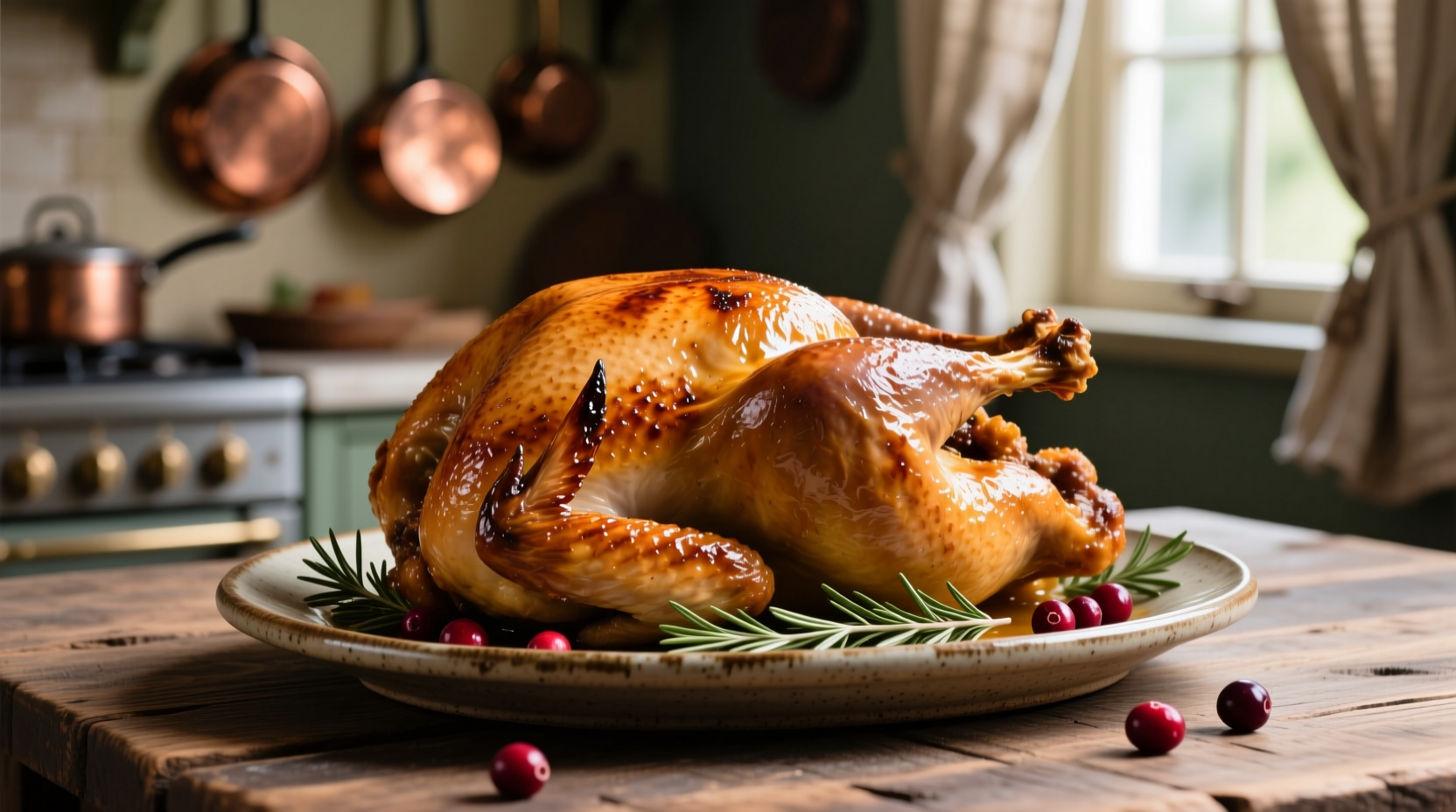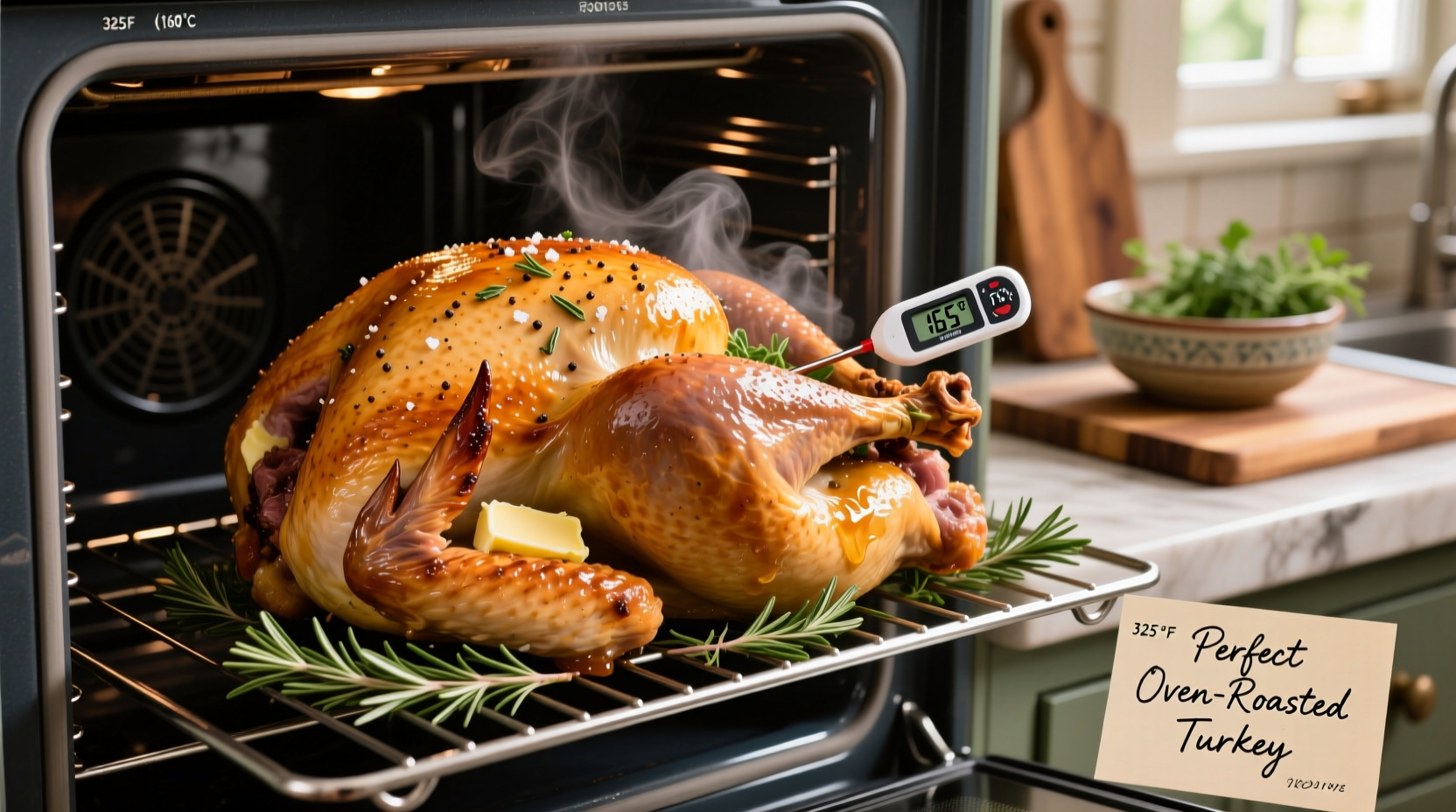Nothing says celebration like a beautifully roasted turkey centerpiece, but achieving that perfect balance of crispy skin and moist meat while ensuring food safety can be challenging. This comprehensive guide delivers professional chef techniques adapted for home kitchens, with precise timing, temperature control, and preparation methods that guarantee impressive results every time. Whether you're preparing your first holiday meal or refining your technique, you'll learn the science-backed methods that transform ordinary roasting into extraordinary culinary success.
Preparation: Setting Up for Success
Before your turkey ever touches the oven, proper preparation determines your final outcome. Start with selecting the right bird: allow 1-1.5 pounds per person for adequate leftovers. A fresh turkey eliminates thawing concerns, but if using frozen, follow USDA's critical thawing timeline:
| Turkey Weight | Refrigerator Thawing Time | Cold Water Thawing Time |
|---|---|---|
| 4-12 pounds | 1-3 days | 2-6 hours |
| 12-16 pounds | 3-4 days | 6-8 hours |
| 16-20 pounds | 4-5 days | 8-10 hours |
| 20-24 pounds | 5-6 days | 10-12 hours |
Always thaw in the refrigerator (40°F or below) or in cold water changed every 30 minutes. Never thaw at room temperature. Once thawed, remove neck and giblets, then pat the turkey completely dry with paper towels—a crucial step for achieving crispy skin. For optimal flavor development, apply a dry brine of salt and herbs under the skin at least 24 hours before cooking. This technique, recommended by food scientists at America's Test Kitchen, seasons the meat deeply while improving moisture retention during roasting.

Seasoning and Flavor Enhancement Techniques
Professional chefs achieve remarkable flavor through strategic seasoning placement. Gently loosen the skin over the breast and thighs, then rub a compound butter mixture directly onto the meat. This technique delivers fat-soluble flavor compounds where they'll have maximum impact. For a classic herb butter, combine:
- 1 cup softened unsalted butter
- 2 tablespoons fresh rosemary, finely chopped
- 2 tablespoons fresh thyme, finely chopped
- 4 cloves garlic, minced
- 1 tablespoon lemon zest
- 1½ tablespoons kosher salt
- 1 teaspoon black pepper
While traditional recipes often call for stuffing, USDA food safety guidelines strongly recommend cooking stuffing separately. When placed inside the turkey, stuffing creates a food safety hazard as it may not reach the required 165°F temperature while the turkey overcooks. If you prefer the traditional flavor infusion, place aromatics like onions, citrus, and fresh herbs in the cavity instead—they'll impart flavor without compromising safety.
Oven Setup and Roasting Process
Preheat your oven to 325°F with the rack positioned in the lower third. This temperature provides the optimal balance between thorough cooking and moisture retention. Place the turkey breast-side up on a rack in a roasting pan—never directly on the pan bottom, which causes uneven cooking. For even better results, elevate the turkey on chopped onions and celery; this creates air circulation while adding flavor to the drippings.
Insert an oven-safe meat thermometer into the thickest part of the thigh, avoiding bone contact. During roasting, resist the urge to open the oven frequently—each peek drops the temperature significantly. Basting is largely unnecessary and often counterproductive; opening the oven door causes temperature fluctuations that extend cooking time and can lead to dry meat. Instead, rely on your thermometer and the recommended cooking times:
- Unstuffed turkey: 13 minutes per pound
- Stuffed turkey: 15 minutes per pound
Monitoring and Troubleshooting Common Issues
As your turkey approaches completion, monitor both visual cues and temperature readings. The skin should be deep golden brown, and juices should run clear when pierced. The critical food safety checkpoint is internal temperature—USDA Food Safety and Inspection Service mandates 165°F in both the breast and thigh. Use an instant-read thermometer to verify:
- Thickest part of breast: 165°F
- Innermost part of thigh: 165°F
- Center of stuffing (if used): 165°F
If the breast is browning too quickly, tent loosely with aluminum foil. For uneven cooking, rotate the pan 180 degrees halfway through roasting. If the turkey finishes early, don't panic—proper resting time is flexible. Simply tent loosely with foil and let it rest off the heat source while you prepare other dishes.
The Critical Resting Phase
Never skip resting time—this 30-45 minute period allows juices to redistribute throughout the meat. During roasting, juices migrate toward the center; resting lets them redistribute evenly. Cover loosely with foil to retain heat without trapping steam that would soften the skin. This phase isn't just about convenience; it's a critical food science principle. As the turkey rests, residual heat continues cooking the meat (carryover cooking), raising the internal temperature 5-10 degrees. This is why you should remove the turkey from the oven when it reaches 160°F—the temperature will safely rise to the required 165°F during resting.
Carving and Serving for Maximum Enjoyment
Proper carving technique ensures you maximize your beautifully cooked turkey. Start by removing the legs and wings, then slice the breast meat against the grain in ¼-inch slices. For presentation, arrange slices slightly overlapping on a warmed platter. Save the carcass for making rich stock—the simmering process extracts every bit of flavor from bones and remaining meat.
Food Safety Essentials You Must Know
Following USDA food safety guidelines isn't optional—it's essential for protecting your guests. Remember these critical points:
- Never partially cook turkey and finish later—this creates dangerous bacteria growth zones
- Leftovers must be refrigerated within 2 hours (1 hour if room temperature exceeds 90°F)
- Store in shallow containers for rapid cooling
- Reheat to 165°F before serving
- Discard any turkey left at room temperature longer than safety windows
When in doubt about safety, follow the maxim: "When you risk it, you regret it." Foodborne illness from improperly handled poultry can cause serious health consequences, particularly for vulnerable populations like children, elderly, and immunocompromised individuals.
Adapting to Your Specific Kitchen Conditions
While standard guidelines provide a foundation, your specific oven and kitchen conditions require adjustments. Convection ovens typically cook 25% faster than conventional ovens, so reduce temperature by 25°F or check for doneness earlier. Glass or dark metal pans absorb more heat than shiny aluminum, potentially causing uneven browning. High-altitude cooking (above 3,000 feet) requires extended cooking times as water boils at lower temperatures. Always prioritize thermometer readings over strict timing, as these variables significantly impact results.











 浙公网安备
33010002000092号
浙公网安备
33010002000092号 浙B2-20120091-4
浙B2-20120091-4